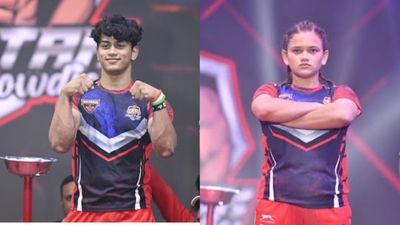
Follow WOWNEWS 24x7 on:

In a landmark move aimed at rewriting the narrative of women’s participation in Indian sports, the Ministry of Youth Affairs and Sports has launched the Khelo India ASMITA Football League 2025–26. Inaugurated by Union Minister of State Raksha Nikhil Khadse at the Godavari Engineering College Ground in Jalgaon, Maharashtra, the initiative is being hailed as a bold step toward affirmative action and inclusive nation-building.
Here’s a comprehensive look at the initiative, its goals, and its impact on the future of women’s sports in India.
1. A League Born of Purpose and Vision
The ASMITA Football League is not just another tournament—it’s a mission-driven platform designed to identify, nurture, and empower young female athletes from diverse and underrepresented communities. Girls aged 13 and under gathered for the opening ceremony, marking the beginning of a grassroots revolution in Indian football.
Key highlight: The league is part of the broader Khelo Bharat Niti, a national policy that promotes sports as a tool for empowerment, unity, and development.
2. Affirmative Action in Action
Raksha Khadse emphasized that ASMITA is a direct response to the historical underrepresentation of women in sports. By creating dedicated spaces for girls—especially those from tribal, rural, and minority backgrounds—the league aims to level the playing field and challenge long-standing stereotypes.
Key highlight: The initiative embodies the spirit of Sabka Saath, Sabka Vikas, ensuring that every girl, regardless of background, has a chance to shine.
3. From First-Time Players to Hidden Champions
The league is structured to accommodate a wide spectrum of talent—from beginners taking their first steps on the field to seasoned young athletes ready for national exposure. Coaches and scouts from the Sports Authority of India and affiliated football bodies are actively involved in identifying promising players for future development.
Key highlight: The inclusive format ensures that no talent goes unnoticed, and every participant receives mentorship and support.
4. Institutional Backing and Collaborative Strength
The launch event saw participation from key dignitaries including Ketakitai Patil and Farukh Shaikh, Secretary of the Jalgaon District Football Association. The league is supported by the Sports Authority of India, the All India Football Federation, and the Western India Football Association, ensuring robust infrastructure and professional oversight.
Key highlight: The multi-agency collaboration reflects a unified commitment to transforming women’s sports at the grassroots level.
5. Changing the Narrative Around Women in Sports
ASMITA is more than a league—it’s a movement. By spotlighting young girls in competitive sports, it challenges societal norms and redefines what it means to be a female athlete in India. The league is already inspiring new role models and encouraging families to support their daughters’ sporting ambitions.
Key highlight: The initiative is helping girls find their identity through sports, fostering confidence, leadership, and community pride.
6. Aligning with India’s Global Sporting Aspirations
The ASMITA League aligns with Prime Minister Narendra Modi’s vision of making India a global sporting powerhouse. By investing in female talent early, the government is laying the foundation for future Olympic contenders and international champions.
Key highlight: The focus on grassroots development ensures long-term sustainability and global competitiveness.
7. What’s Next for ASMITA
Following the successful launch in Jalgaon, the league is expected to expand to other districts and states, creating a nationwide network of female football talent. Plans are underway to introduce similar leagues in other sports, including athletics, hockey, and volleyball.
Key highlight: ASMITA is poised to become a replicable model for inclusive sports development across India.
Sources: MyKhel, The Tribune India, NewKerala, Devdiscourse.

